Posted by Elena del Valle on August 10, 2009

Actress Ana de la Reguera
Photo, videos: Procter & Gamble
Procter & Gamble recently hired Ana de la Reguera, a Mexican actress, to promote its Pantene Pro-V line with a new Spanish language ad campaign that appeared in Hispanic magazines, TV stations and websites across the United States in June 2009. Company representatives declined to share details about the campaign in spite of several email and phone requests. Scroll down to watch the ad and a behind the scenes interview with de la Reguera.
“We feel honored that Pantene has received more awards than leading salon brands,” said Carolina Varela, brand manager for Pantene. “Her stunning beauty, gorgeous hair and easy spirit make her an ideal addition to the Pantene family of spokesmodels.”
“My work demands constant hair brushing, combing and styling. For a fraction of the cost of expensive salon brands, Pantene keeps it healthy,” De la Reguera was quoted in a press release.
De la Reguera, voted one of the 50 Most Beautiful by People en Espanol magazine, made her Hollywood debut in a 2006 movie. P&G Beauty products include 100 brands available in nearly 130 countries. The cosmetics giant had sales of more than $22 billion in fiscal year 2006/07, making it a leading global beauty company. P&G Beauty brands include Pantene, Olay, Head and Shoulders, Max Factor, Cover Girl, DDF, Sassoon Professional, Wellaflex, Rejoice, Sebastian Professional, Herbal Essences, Koleston, Clairol Professional.
Click on the play button to watch the Pantene Spanish language ad and behind the scenes video below
Comments:
Filed Under: Video
Posted by Elena del Valle on August 7, 2009
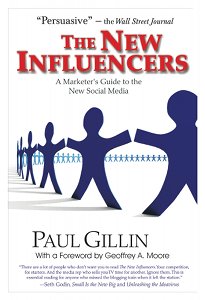
The New Influencers book cover
Photos: Quill Driver Books
Paul Gillin makes his living advising marketing consultants and senior executives on social media. He believes one of the most remarkable aspects of the new media landscape is the emergence of people and media that influence others within “communities that have no rules, no governing structures, no standards and no hierarchy.” Toward that goal he wrote The New Influencers A Marketer’s Guide to the New Social Media (Quill Driver Books, $16.95).
Out of what should be chaos, he says, an informal structure is developing. Often those who command attention and lead the way online are individuals of authority in their own fields offline. He discusses Enthusiasts, a group of people who blog to express their opinions and share information. Although their motivations are difficult to pinpoint he believes they can be valuable to businesses and organizations as a sort of “global online focus group that works for free.”
He also refers to Influentials (from The Influentials, a book by Ed Keller and Jon Berry) who some believe play a major role in the decision making of the general market. According to the book authors, 10 percent of Americans influence the purchasing decisions of the remaining 90 percent of Americans. Gillin goes on to argue that many enthusiast bloggers see their role as one of commentary rather than original reporting. His advice: Businesses, such as Wal-Mart, which he refers to in an example, would be better served by addressing mainstream media for large focus issues and bloggers for personal issues.
The 236-page paperback book, published earlier this year, is divided into 11 chapters: The Origins of Social Media; From Chaos, Structure; Enthusiasts; Measures of Influence; Corporate Conversations; Small Is Beautiful; Putting “Public” Back Into Public Relations; The Talkers; Tools of the Trade; Going Viral; and Next Steps. He closes with two appendices: The Numbers and Leveraging Technology.
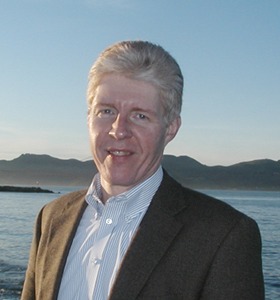
Author Paul Gillin
Prior to writing the book and offering his services as a social media consultant Gillin covered computer industry issues as a journalist for fifteen years. He was editor-in-chief of TechTarget and held the same title at Computerworld.
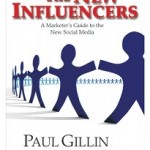
Click here to buy The New Influencers
Comments:
Filed Under: Books
Posted by Elena del Valle on August 5, 2009

Lulu-Cola style panties
Photos: Palomita
Relying on Latino nostalgia for their roots, Palomita, a San Francisco, California based Latino fashion brand, launched a new product line. Beginning in March of this year, the company has been selling panties. They come in small to extra large sizes and are made in Bangladesh by HYP.
The new underwear line is sold at one hundred Sears department stores and online at Sears.com. They are available in four designs that highlight logos and images from Latin American consumer products and characters such as Boing!, Lulu and Lulu Cola. The brand designs target Latino women. The retail sales price is $6 each.
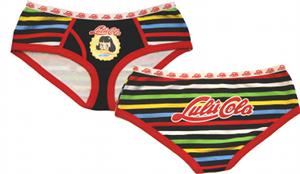
Palomita underwear
Palomita was created by Molly “Molona” Robbins, a Mexico City native and apparel industry veteran. Several yeas ago she secured exclusive rights to use trademarks and vintage art from some Latin American brands. A line of sleepwear and underwear, also made and distributed under license by HYP Inc., is available at some Sears’s department stores and online.
Prior to the underwear and pajama lines, Palomita released t-shirts and a junior and girls line (see Entrepreneur launches junior, girls clothing line and Online grocer adds Latino themed clothing for men, boys).
Target Latinos effectively by understanding how they shop
“Hispanic Holiday Shopping Patterns” audio recording

Manuel Delgado, CEO Agua Marketing, gives a presentation and participates in an extended Q&A discussion about
- Hispanic shopping patterns national survey
- Why Latino consumers may be more desirable than general market shoppers
- Hispanics holiday shopping patterns and behaviors
Click here for information on “Hispanic Holiday Shopping Patterns” audio recording
Posted by Elena del Valle on August 4, 2009
FOR IMMEDIATE RELEASE
Contact: Vanessa Bravo
vanebravo25@yahoo.com
Aug 04, 2009 – Boca Raton, FLA. – Hispanic Marketing and Public Relations (HispanicMPR.com) is reaching its fourth anniversary and is growing fast. What started four years ago as a small forum to share ideas about the book Hispanic Marketing & Public Relations (Poyeen Publishing, $49.95) has grown into a fully developed Web site with a wealth of information, articles, audio and video content about business topics and the Hispanic market.
Today, HispanicMPR.com offers visitors 44 guest articles authored by business, marketing, management and public relations specialists; 110 podcast interviews with national experts; 950 articles authored by Elena del Valle; 23 presentations by national experts on business topics; 48 videos, and many job ads. There is also a Books Section with a weekly book feature.
The Web site has become a useful tool for business executives and entrepreneurs interested in business, marketing, public relations and business development issues. It has grown a loyal pool of users: there are more than 3,500 subscribers signed up to receive a free e-mail newsletter. Each week, thousands of people access the Web site and download podcast interviews.
The podcasts, one of the favorite sections in the Web site, feature national experts such as Ruth Gaviria, executive director of Meredith Hispanic Ventures; Reinaldo Padua, assistant vice president at The Coca-Cola Company; Kathleen Haley, director of multicultural communication at Hewlett-Packard, and Rupa Ranganathan, an ethnic strategist and former senior vice president at the Strategic Research Institute.
Elena del Valle is the host and editor of HispanicMPR.com. She is also an author and principal of LNA World Communications , a marketing and communications company, where she is responsible for media training, strategic planning and client relations.
Why has HispanicMPR.com succeeded and grown so much during these four years? In a recent survey conducted by HispanicMPR.com among its e-mail subscribers, frequent users like Hector Galvan, Hispanic media relations and public relations representative at Boost Mobile; Dawn Randall, classified advertising manager at the Osceola News Gazette; and Nelson Merchan, president of Clicroi, said that HispanicMPR.com’s content is useful, unique and professionally written. (Find their comments at HispanicMPR User Comments).
Editor’s note: Elena del Valle is available as an expert source for interviews, podcasts, or public speaking opportunities.
Posted by Elena del Valle on August 3, 2009

Flag of Mexico
Because most immigrants to the United States come from Mexico (see Mexico top country of origin of foreign born) many immigration watchers look closely at trends in immigration from that country. Since 2006, the overall number of immigrants from Mexico has declined significantly (see Mexican immigration declined sharply last year). Researchers at the Pew Hispanic Center wondered whether the decline in immigrants would also mean an increase in Mexican born immigrants returning to their country of origin.
The answer is no according to data from Mexican and United States sources such as the United States Population Survey and the United States Border Patrol. A recent study by the Pew Hispanic Center seems to indicate there is no correlation between incoming immigrant and outgoing (from Mexico) numbers.
The Mexico National Survey of Employment and Occupation indicates that 433,000 immigrants returned to Mexico between February 2008 and February 2009 while 440,000 and 479,000 immigrants returned to Mexico for the same period in 2007-2008 and 2006-2007, respectively. An examination of the U.S. Current Population Survey reveals no indication of substantially higher outflows to Mexico for 2007 or 2008.
One third of all foreign-born residents and two-thirds of Hispanic immigrants are from Mexico. At the same time almost all Mexican immigrants move to the United States. Looked at another way, ten percent of people born in Mexico live in the United States.
“Segmentation by Level of Acculturation” audio recording

Presenter Miguel Gomez Winebrenner
Discusses
- Assimilation versus acculturation
- Factors that affect Latino acculturation
- How to know if someone is acculturated
- Number of years necessary for acculturation
- Effects of immigration debate on acculturation
- Three main ways of segmenting Latinos
Click here for details about “Segmentation by Level of Acculturation”
Posted by Elena del Valle on July 31, 2009
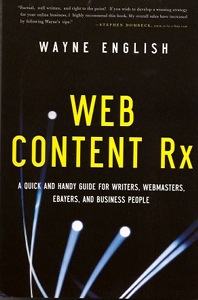
Web Content RX book cover
Wayne English believes the quality of online content is important. He also believes that web content, design and keywords are equally important. That is why he included web development information in his recently published book Web Content Rx A Quick and Handy Guide for Writers, Webmasters, Ebayers and Business People (Career Press, $7.99). In the book, he includes insights on writing easy-to-understand content, choosing a good design, preparing eBay ads, making email addresses unreadable by spammers, and the abc’s of making a podcast and blogging.
The 240-page softcover book is divided into eleven chapters: Get Read or Get Lost – Your Content Decides; Writing Your Content; Content That Sells; Using Automated and Other People’s Content; E-mail; Your Blog; Getting Found: Content and Search Engines; User-Generated and User-Maintained Content; Communication; Podcasting; and Digital Photography.
There are also 10 appendices: Grammar, A Writer’s Checklist, Web Design and HTML, Your Business, A Short Style Guide and Confused Words, Online Tools, HTML Characters and Special Characters; Unspammable E-mail Code, An Almost Foolproof Data Backup Scheme, and Site Search with Google.

Author Wayne English
English, formerly a professional photographer, is the founder of WebContentRx.com. He makes his living writing online oriented content; doing website analysis; launching e-mail campaigns; and marketing websites for clients.

Click here to buy Web Content Rx
Comments:
Filed Under: Books
Posted by Elena del Valle on July 29, 2009
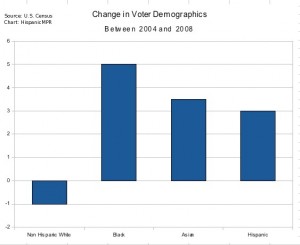
Voter Change Between 2004 and 2008
Sixty-six percent of white non Hispanic voters voted in 2008. That represents a 1 percent decrease compared to 2004. In contrast, minority voter participation increased over the same time period, according to recently released United States Census data. Black turnout at the polls went up 5 percent to 65 percent; Hispanic turnout went up 3 percent and Asian voter turnout went up 3.5 percent, making each group reach almost 50 percent. Many, if not most of these people, cast their votes in favor of the new Democratic President.
Viewed as an unlikely combined voting block the three minority groups would represent almost one quarter of all voters. While they may not agree on all their political viewpoints, in the most recent election, according to the Census, they agreed on one individual, Barack Obama. Among voters 18 to 24 black voters had the highest turnout rate at 55 percent. That represents an 8 point increase compared to 2004. White turnout remained at 49 percent while Asian turnout was 41 percent and Hispanic turnout was 39 percent.
What do these numbers say to marketers and politicians? That the voter profile is changing. There are many ethnic and cultural groups represented among the young adults joining the ranks of voters and they bring with them their own unique perspectives about voting and the election process. This is easy to see in states with a population rich in minorities.
In Florida, for example, almost all of the new 579,000 voters were black or Hispanic. And turnout among young voters increased 10 percentage points from the last election, from 39 percent to 49 percent. Those 75 and older, on the other hand, were less likely to vote. Their numbers dropped from 72 percent to 69 percent between the two election years.
If these changes continue in future elections it would appear the minority vote is growing and may again play a role in the overall voting outcome. Those in the business of influencing political opinions may want to keep that in mind as they craft political messages and outline campaign efforts in the future.
Reach Hispanics online today with
“Marketing to Hispanics Online” audio recording
Identifying and characterizing the booming Hispanic online market



Joel Bary, Alex Carvallo and Matias Perel
Find out about
• The 16 million Latino online users
• Latino online users by gender
• What they do online
• Their language preferences
• How to reach Hispanic urban youth online
• What affects their online behavior
• What influences their purchases
Click here for information about “Marketing to Hispanics Online”
Posted by Elena del Valle on July 28, 2009
Information provided by our Event Partner
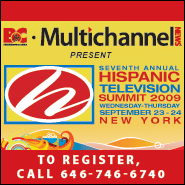
Hispanic Television Summit
September 23-24, 2009
Marriott Marquis Hotel in Times Square, New York
Two leading, television business publications, Multichannel News and Broadcasting & Cable will again co-operatively present the seventh annual Hispanic Television Summit, which has earned the distinction of being the premiere event for those in Hispanic digital video, media and related businesses.
The two-day conference will be held on Wednesday, September 23 and Thursday, September 24, 2009 at the Marriott Marquis Hotel in Times Square, New York.
This year, for the first time, the Hispanic Television Summit is scheduled in tandem with Advertising Week New York 2009 and serves as the Hispanic cornerstone of the week-long series of events and conferences.
As a result of the Summit’s affiliation with the increasingly-popular Advertising Week, attendance is expected to exceed the previous record of 400 executives. Attendees of the Hispanic Television Summit traditionally reflect programming, production, research, advertising, agencies, audience measurement, financial investment, and distribution (broadcast TV, cable, satellite, broadband and telephony).
The topics and discussion will be “fresh” and reflective of the current business environment. The theme of this year’s Summit is “Generating Revenues For Hispanic TV….From Advertising, Subscription Fees and Transactions”. Each of the three keynote presentations and five panel conversations will focus on how Hispanic television continues to make money in these tough economic times.
Keynote presenters will include pay TV, advertising and broadcast leaders like Telemundo’s CEO, Don Browne. Panels address topics like – – increasing advertising revenues; marketing pay TV and transactional programming to Hispanic consumers; programming for Hispanic male viewers; driving viewership of Hispanic TV programming through targeted experiential tune-in promotions; and the challenges faced by programmers of Hispanic content for distribution in a multi-screen environment.
Additionally, there are numerous opportunities for networking with other attendees, including several coffee breaks, Wednesday’s opening dessert reception (1-2 pm) and cocktail reception (5 – 7 pm) as well as Thursday’s continental breakfast (8-8:45 am), and closing Awards luncheon (12:30 – 2:30 pm). A special lounge area is available to attendees for small, informal meetings and casual conversations.
The Summit will open with a keynote address at 2 pm on Wednesday, September 23 and concludes promptly at 2:30 pm on Thursday, September 24 with the Closing Luncheon, Award Presentation and Final Keynote address.
Each year, the Summit presents the Award in recognition for Achievement in Hispanic Television. The 2008 award was presented to Univision’s leading anchorperson, Jorge Ramos. Previous recipients also include talk show host, Cristina Saralegui, journalist Maria Celeste Arraras, sportscaster Andres Cantor and Mario Kreutzberger “Don Francisco”, the host of the world’s longest-running TV program, Sabado Gigante.
Early-bird Registration rates of $399 (save $100) are effective until September 1, 2009 and group discount rates also apply for additional savings. Register on-line at multichannelnews.com/hispanicsummit. The Summit is produced for Multichannel News and Broadcasting & Cable by the Schramm Marketing Group of New York.
Register at www.broadcastingcable.com/hispanicsummit09


























